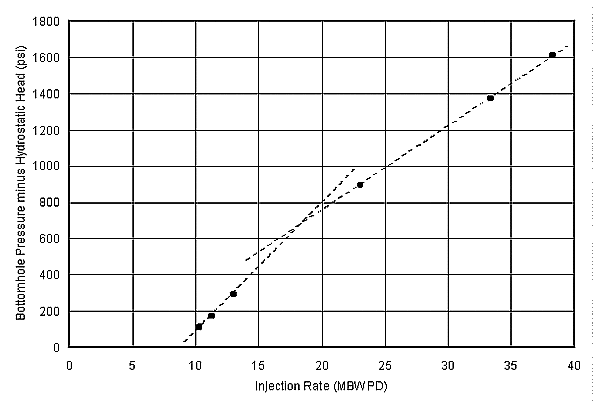
Figure 1. Step rate test on Magnus C7.
Guidelines for Step Rate Testing
Introduction:
A step rate injectivity test is normally used to estimate the transition from matrix (or pseudo-matrix - a fracture may already be present but the bulk of the flow is radial) flow to fracture-dominated injection, according to a change in slope of a plot of pressure versus rate. Step rate testing allows for determination of when a new hydraulic fracture occurs and/or when a pre-existing fracture opens/propagates.
Step rate testing allows for determining when a fracture will propagate and when a pre-existing fracture will reopen. It can be run after a conventional falloff or a final falloff segment can be used in the test. Repeated falloff testing can also be used to assess if a reservoir has been altered by thermal changes in in-situ stresses or changes in kh associated with thermal effects.
Injection is carried out at a number of rates below fracturing pressure. At each rate injection continues until stabilization appears to occur. The injection operations are continued after indications of fracture opening/propagation. The opening pressure is inferred from a significant change in slope of a plot of bottomhole pressure versus injection rate. Figure 1 is an example.

Figure 1. Step rate test on Magnus C7.
| <Methods | Procedures> |
|
|
|
|
|